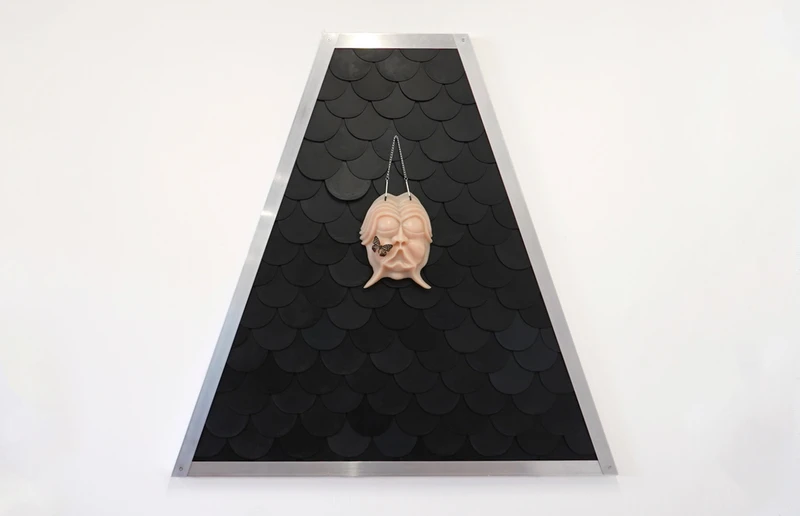Romain Sarrot: 9:00 AM
29 Jun-17 Sep 2023
PV 28 Jun 2023, 6-8pm


'9:00 AM' is a solo show by French artist Romain Sarrot and the 3rd quarter of his “conceptual creativity cycle corpus: the cycle of the Departure I”.
The installation questions the search for a mysterious kind of euphoria that accompanies the sensation of elevation. It puts us in this very particular state of weightlessness and suspension, as if our soul was leaving the body. For Romain Sarrot, the impossibility, for humans, to be satisfied with their finite condition is at the heart of the exhibition. He thus wants to represent the struggle between the desire for adventure and peace, between comfort and danger, the struggle between belief and experience.
The artist stages the porosity between heaven and earth, ascendent and descendent movements, the top and the bottom. The title-hour 9:00 am brings together spiritual traditions. It evokes “the Third”, a prayer signifying both the descent and the ascent. The reference to 9:00 am is also present in popular culture, as in the song “Rocket Man” by Elton John. The song talks about an astronaut on a mission in space and whose family he misses. It is directly inspired by a science fiction short story by Ray Bardbury, the Rocket Man, told by Doug, a 14-year-old boy, whose father travels in space for three consecutive months, stays at home next to his grieving mother Lilly. In Bradbury's story, the rocket man is torn between his two lives as if was gravity pulling him back to the unknown adventure in the sky. Each time he returns, his wife experiences his living presence as a memory. The song highlights the feeling of fatality and loss on the part of the father. By means of a theatrical installation, 9:00 am therefore deals with latency and with the feelings it engenders. Romain Sarrot stages the euphoria of losing ground and the exaltation of elevation by using an all-encompassing mystical white light, opacified window, fragments of roof-tops and a ladder. The spectator is situated at the level of experience. He lives the experience as if he was omniscient.
One way of approaching the exhibition is to see how it explores forms of transcendence. Ascension is one of them. The spectator is moving beyond the limits of the physical world. We are entering into a spiritual realm, evoking the feeling of rising above the earth when one starts to fly. There are four faces in silicon in the exhibition. They are inspired by the Mostasu: “talking statues” that served as an outlet for the frustrations and complaints of the people. The reference to this popular form of confession, coexisting with more traditional Christian confessions, introduces a more ambiguous take on transcendence and spirituality. The Mostasu is a hybrid sitting somewhere between the insect, the human and the animal. The use of silicon not only refers to human flesh but also to sexuality, as if we were looking at the repressed in religion.
Through the exhibition, we are facing the profound dissatisfaction that lies underneath our mystical quests of euphoria. In John Steinbeck's The Winter of Our Discontent, Ethan experiences the feeling of Weltschmerz. This term, introduced by German romantic poet Jean Paul, refers to the pain one feels when one realizes that our spiritual desires will never be fulfilled because of the physical limitation of a finite world. One could say that it is this pain that the exhibition is trying to translate visually. It thus plunges us into melancholia when we realise that this world will never satisfy our deepest desires.